Tyres and stopping distance are closely associated. Many people mistakenly believe that worn tread is only hazardous in wet weather. However, driving conditions aren't the sole factor affecting safety—the condition of your tyres plays a critical role in your ability sto brake effectively and maintain control. Regular tyre maintenance is essential to ensure your vehicle is safe and roadworthy. Opting to buy tyres online can simplify this process, giving you access to a wide range of options and helping you stay on top of safety requirements.
Why Tyre Condition Matters
Driving on worn tyres compromises your safety and that of your passengers. Neglecting to replace your tyres when they are worn not only increases the risk of accidents but can also lead to invalid insurance claims. In Australia, the minimum legal tread depth is 1.6mm, but safety experts recommend replacing tyres once they reach 3.0mm. This proactive approach significantly improves stopping distance and reduces the likelihood of accidents.
Consequences of Worn Tyres
-
Increased Stopping Distance: Braking performance decreases as tread wears down, especially in wet conditions.
-
Higher Risk of Aquaplaning: Insufficient tread depth reduces the tyre’s ability to channel water away, leading to loss of traction.
-
Poor Fuel Efficiency: Worn tyres can increase rolling resistance, impacting fuel consumption.
-
Punctures and Blowouts: Tyres with low tread depth are more prone to punctures and damage.
-
Invalid Insurance Claims: Driving on unroadworthy tyres can result in rejected claims in the event of an accident.
The Science Behind Stopping Distance
Stopping distance is influenced by various factors, including tyre condition, road surface, and weather. A comparison of braking performance illustrates the importance of maintaining adequate tread depth:
-
New Tyres: When driving at 80km/h in wet conditions, new tyres allow you to stop safely and avoid hazards.
-
Worn Tyres (3.0mm tread): The same car will still be traveling over 30km/h at the point where new tyres would have stopped, requiring an additional 9.5m to come to a halt. (NRMA, 2019)
This stark difference underscores why timely tyre replacement is vital for your safety.
Choosing the Right Tyres
When it’s time to replace your tyres, selecting the right brand and type is crucial. At Buds Tyres, we offer a wide range of high-quality tyres from reputable brands such as:
-
BlackBear – Known for durability and performance.
-
Maxxis – Reliable and affordable for everyday driving.
-
BFGoodrich – Ideal for off-road adventures.
-
Toyo – A popular choice for long-lasting tread life.
-
Nitto – Offers excellent grip and handling.
-
Kenda – Budget-friendly without compromising quality.
-
Yokohama – Renowned for advanced tyre technology.
Shop online or visit our tyre shop in Burleigh to explore the best options for your vehicle.
Importance of Wheel Alignment and Balancing
Proper wheel alignment and balancing are essential to maximise the lifespan of your tyres and improve driving performance. Misaligned or unbalanced wheels can cause uneven tread wear, reducing safety and efficiency. Signs that you may need these services include:
-
Uneven Tread Wear: Patterns can indicate overinflation, underinflation, or alignment issues.
-
Vehicle Pulling to One Side: A clear sign of alignment problems.
-
Vibrations While Driving: Often caused by unbalanced wheels.
At Buds Tyres, we provide professional wheel alignment and balancing services to ensure your tyres wear evenly and your vehicle handles smoothly.
Tips for Maintaining Tyres and Wheels
To enhance safety and prolong tyre life, follow these maintenance tips:
-
Check Tread Depth Regularly: Use a tread depth gauge or the "coin test" to ensure tread is above 3.0mm.
-
Inspect Tyre Pressure: Under Inflated or overinflated tyres can lead to uneven wear and poor fuel efficiency.
-
Rotate Tyres Periodically: Rotating tyres every 10,000km promotes even wear.
-
Monitor for Damage: Look for cracks, bulges, or foreign objects embedded in the tyre.
-
Schedule Regular Alignments: Misaligned wheels increase tyre wear and compromise handling.
The Convenience of Buying Tyres Online
In today’s digital age, buying tyres online is a convenient and time-saving option. Buds Tyres makes it easy to browse and purchase a wide selection of tyres and wheels from the comfort of your home. Here are the benefits of shopping online:
-
Wide Selection: Choose from leading brands like BlackBear, Maxxis, and Yokohama.
-
Competitive Prices: Find great deals and discounts on high-quality tyres.
-
Convenient Delivery: Have your tyres delivered to your doorstep or a nearby service centre.
-
Expert Advice: Access detailed product descriptions and customer reviews to make informed decisions.
Why Choose Buds Tyres?
At Buds Tyres, we prioritise safety, quality, and customer satisfaction. Whether you’re looking to buy tyres or wheels online, visit a tyre shop in Burleigh, or get professional services like wheel balancing and alignment, we’ve got you covered. Our experienced team is here to help you choose the right tyres and ensure your vehicle performs at its best.
Final Thoughts
Your tyres play a crucial role in determining your vehicle’s stopping distance and overall safety. Regular maintenance, timely replacement, and professional services like wheel alignment can significantly improve your driving experience. Don’t compromise on safety—shop online or visit Buds Tyres today to find the perfect tyres for your needs.
Contact Us
For more information about our products and services, or to schedule an appointment, visit our website or call our tyre shop in Burleigh. Your safety is our priority!
Contact Info
Opening Hours
Mon - Fri: 8:00 AM - 5:00 PM
Saturday: 8:00 AM - 1:00 PM
